C3.2 Defense against disease
1/36
There's no tags or description
Looks like no tags are added yet.
Name | Mastery | Learn | Test | Matching | Spaced |
|---|
No study sessions yet.
37 Terms
What are pathogens?
They are microorganisms that cause disease. They enter from one infected organism to another, where they then multiply and cause harm.
What are they 4 types of pathogens?
Bacteria
Fungi
Protista
Viruses
What are parasites?
They are large pathogens that can be seen with the naked eye
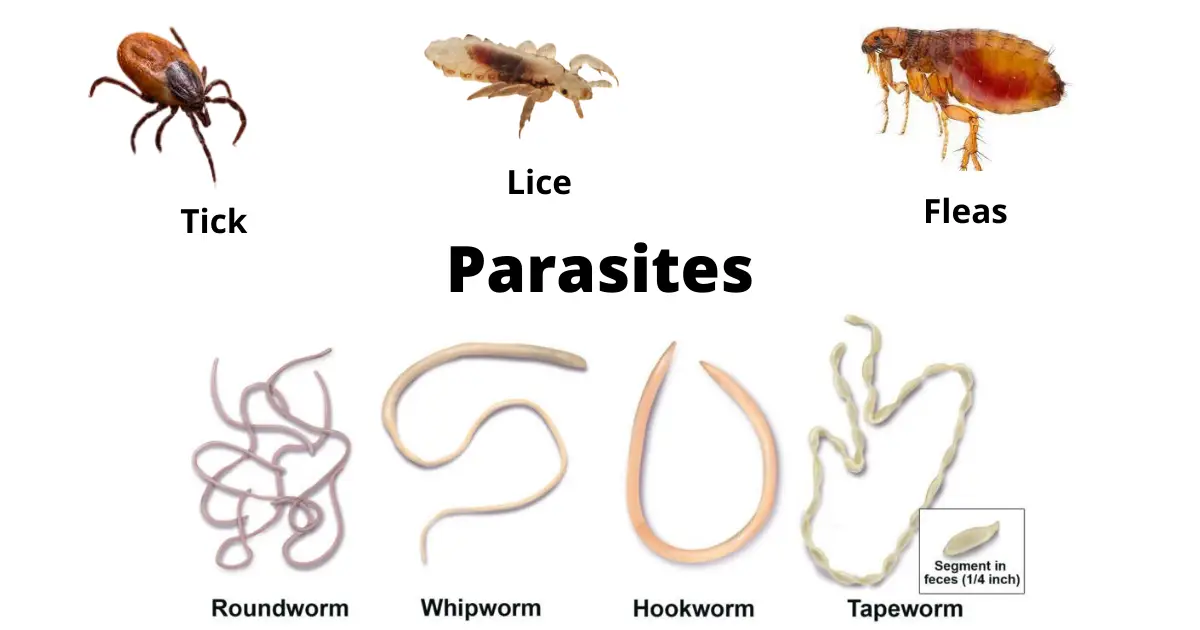
What is the main bacteria causing disease?
Eubacteria
Why are viruses still considered pathogens, even though they’re not alive?
They can be replicated and cause disease
What are prions?
These can also cause some infectuous diseases. They are misfolded proteins, that affect the brain and cause mad cow disease.
Give some examples where observations by scientists have led to progress in disease control
Semmelweis came up with the idea of how to reduce the spread of epidemics childbed fever
John snow found the link between cholera outbreaks in London, as it was found in freshwater
How does the body prevent diseases coming in from the outside?
Through the skin membrane - It has a layer of dead cells and keratin, which strengthens these layers
Cuts in the skin are sealed through blood clots to prevent diseases from entering in the blood, and blood loss
Sebum on the glands of hair on skin maintains a lower skin pH - as this promotes the growth of good bacteria
How does blood clotting work?
Platelets form a temporary plug → they release clotting factors → the enzyme thrombin is released → thrombin catalyzes the soluble protein fibrinogen to turn into insoluble fibrin → fibrin forms a sticky barrier that traps platelets and blood cells together → this forms a gel that dries to form a scab
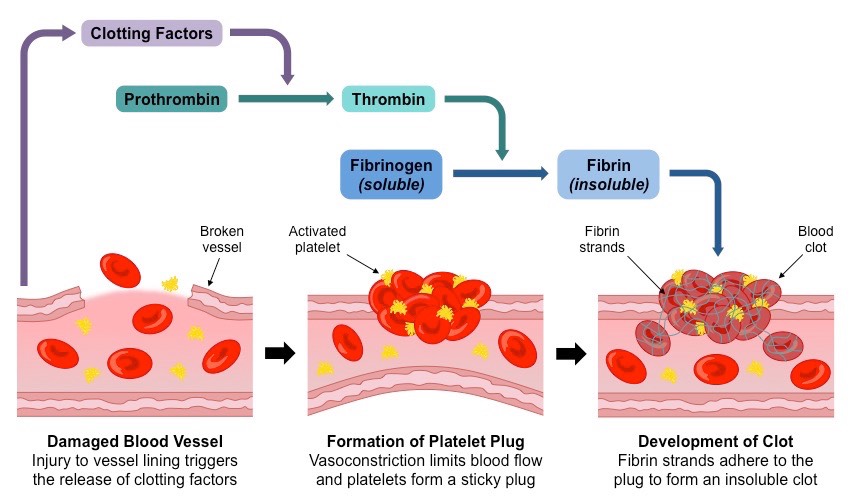
How does mucus protect the inside of the body from pathogens?
These are found on the inside of the inside of airways.
-Goblet cells secrete mucus, which traps pathogens. This mucus travels up the airway via cilia and is then swallowed.
-Mucus also contains antibacterial lysozyme enzymes, which break down pathogens
How does the body protect itself if diseases get in?
The innate immune system
The adaptive immune system
What are antigens?
Antigens are molecules (often proteins or glycoproteins) found on the surface of cells. Every non-self antigen has a specific antibody, that fights against it.
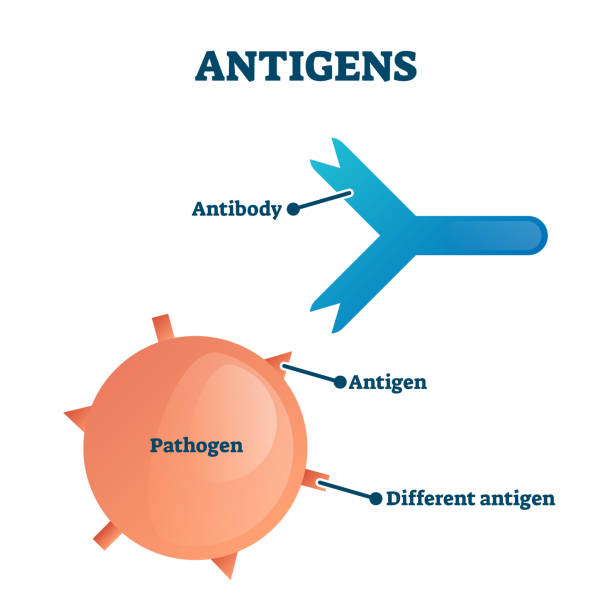
What are self-antigens?
They are found on cells that are not pathogens, cells that belong to the human body and are supposed to be here. These do not trigger an immune response
What are non-self antigens?
Non-self antigens are found on the surface of pathogens. The immune system recognizes pathogens by its non-self antigens on the surfaces.
What is the innate immune system?
The innate immune system is non-specific. When the receptors on the phagocyte detect the non-self antigens on the pathogen and binds to it, phagocyte is activated. It then engulf the pathogen and digests it. Then, the phagocyte presents the antigens on its surface.

What is the adaptive immune system?
The adaptive immune system occurs after the innate immune system. It is when the antigens that were presented on the surface of the phagocyte is detected by receptors on t-lymphocytes. T-lymphocytes then divide and differentiate, to form T-helper, T-cytotoxic or T-regulatory. T-helper binds to B-lymphocytes to activate them. The b-lymphocytes then divide and differentiate into memory and plasma cells. Plasma cells produce antibodies specific to the pathogen, to kill it
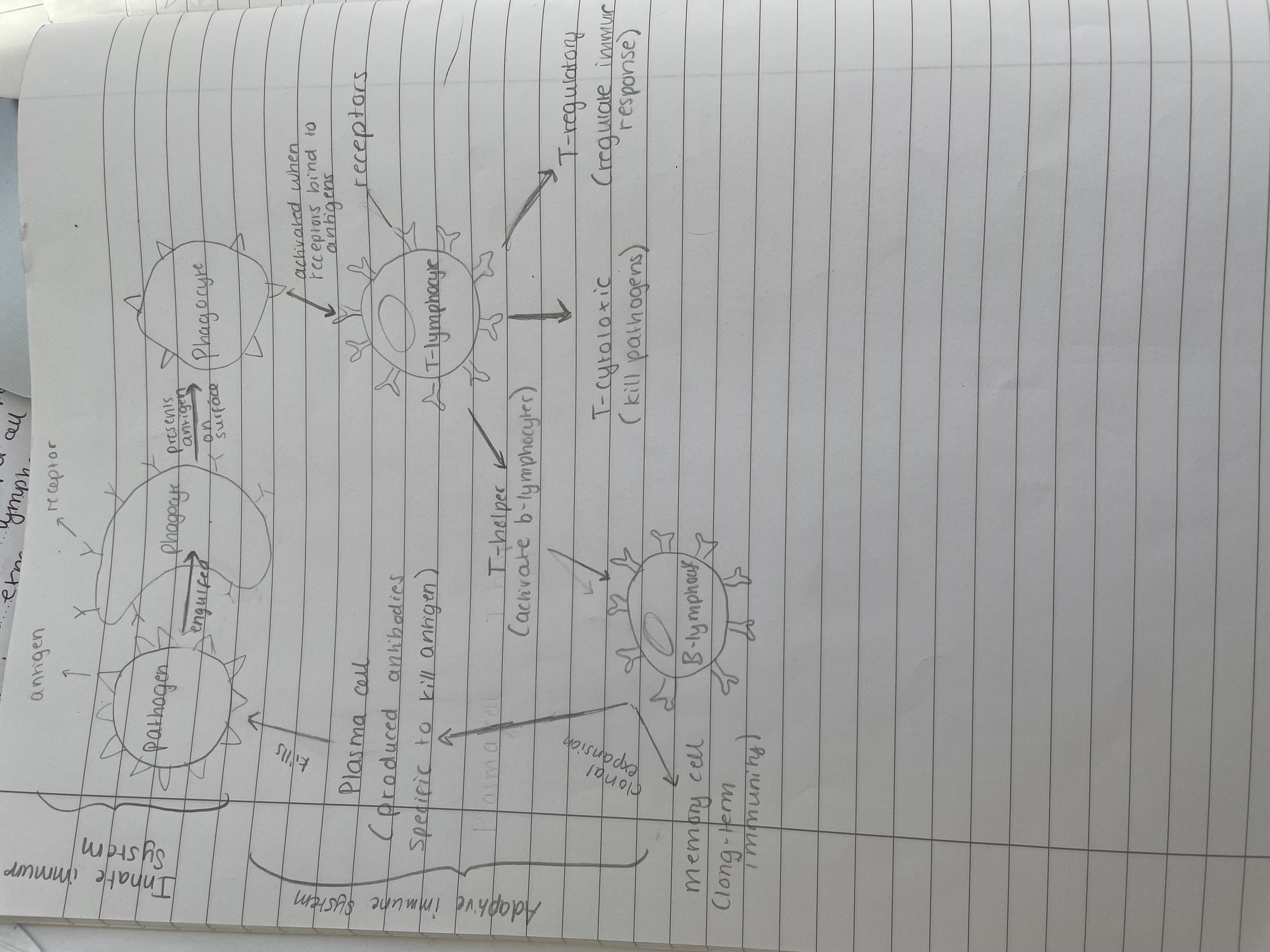
What are phagocytes?
Phagocytes are white blood cells that move to the site of infection through the blood. Their receptors detect non-self antigens on pathogens. They engulf the pathogen and digest it using the digestive enzymes in the lysosome. Then, they present the antigens on their surface.
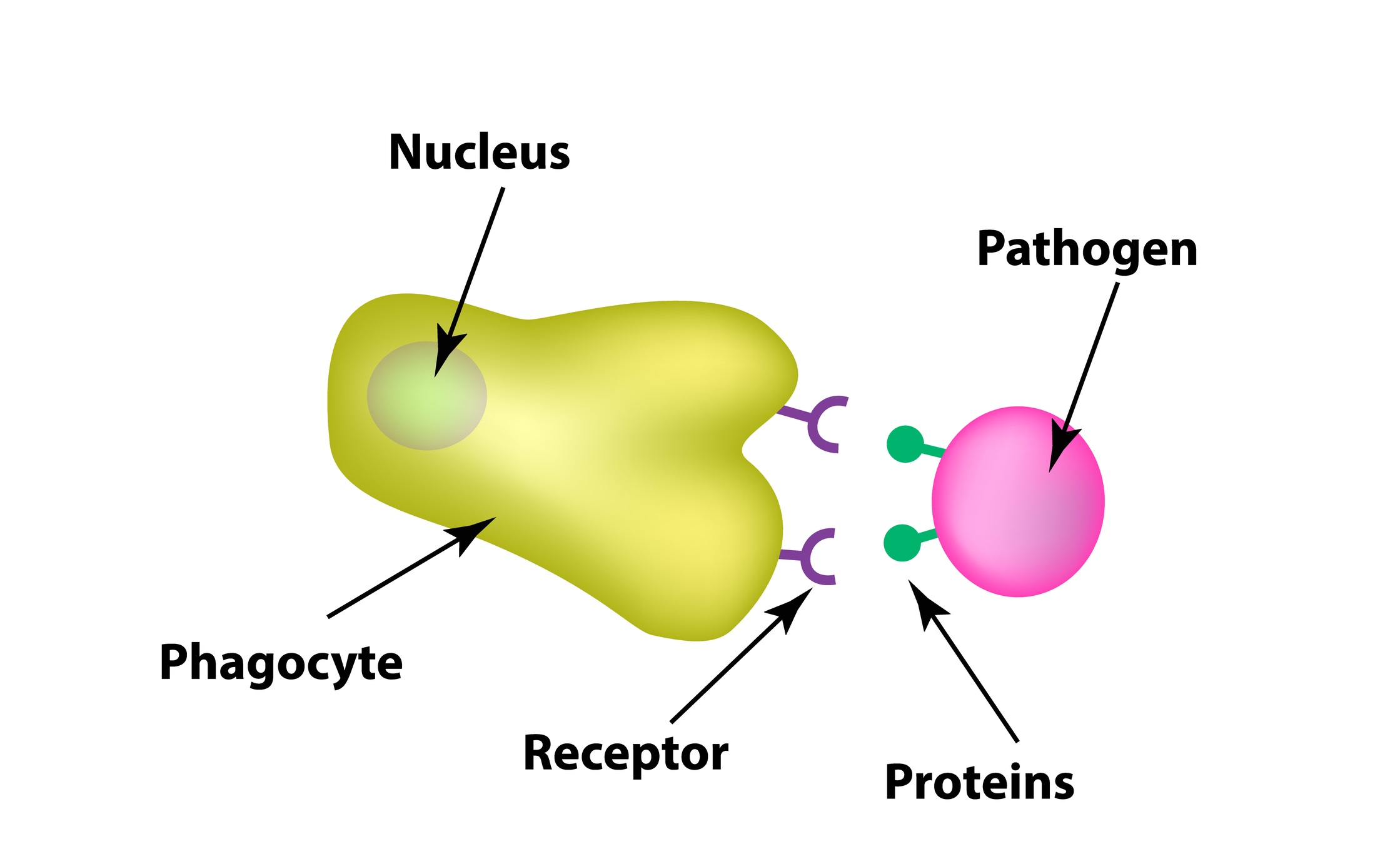
What are lymphocytes?
These are also white blood cells. There are two types of lymphocytes: T-lymphocytes, and B-lymphocytes.
What are T-lymphocytes?
They are white blood cells that mature in the thymus. They have receptors on their surface that attach to specific antigens. When they bind to these, they are activated, and then divide and differentiate.
What are the different types of T-cells and what do they do?
T-helper cells → they help the immune system by activating b-cells
T-Cytotoxic → they kill infected cells
T-regulatory → they regulate the response, and keep the immune system balanced
What are B-lymphocytes?
They are white blood cells that mature in the bone marrow. When the t-helper cell binds to the b-lymphocyte, they are activated and divide and differentiate, to form plasma cells and memory cells.
What are the different types of B-cells and what do they do?
Plasma cell → they produce antibodies
Memory cell → they remember antigens, and can then generate a quicker response
Whole process of immune response
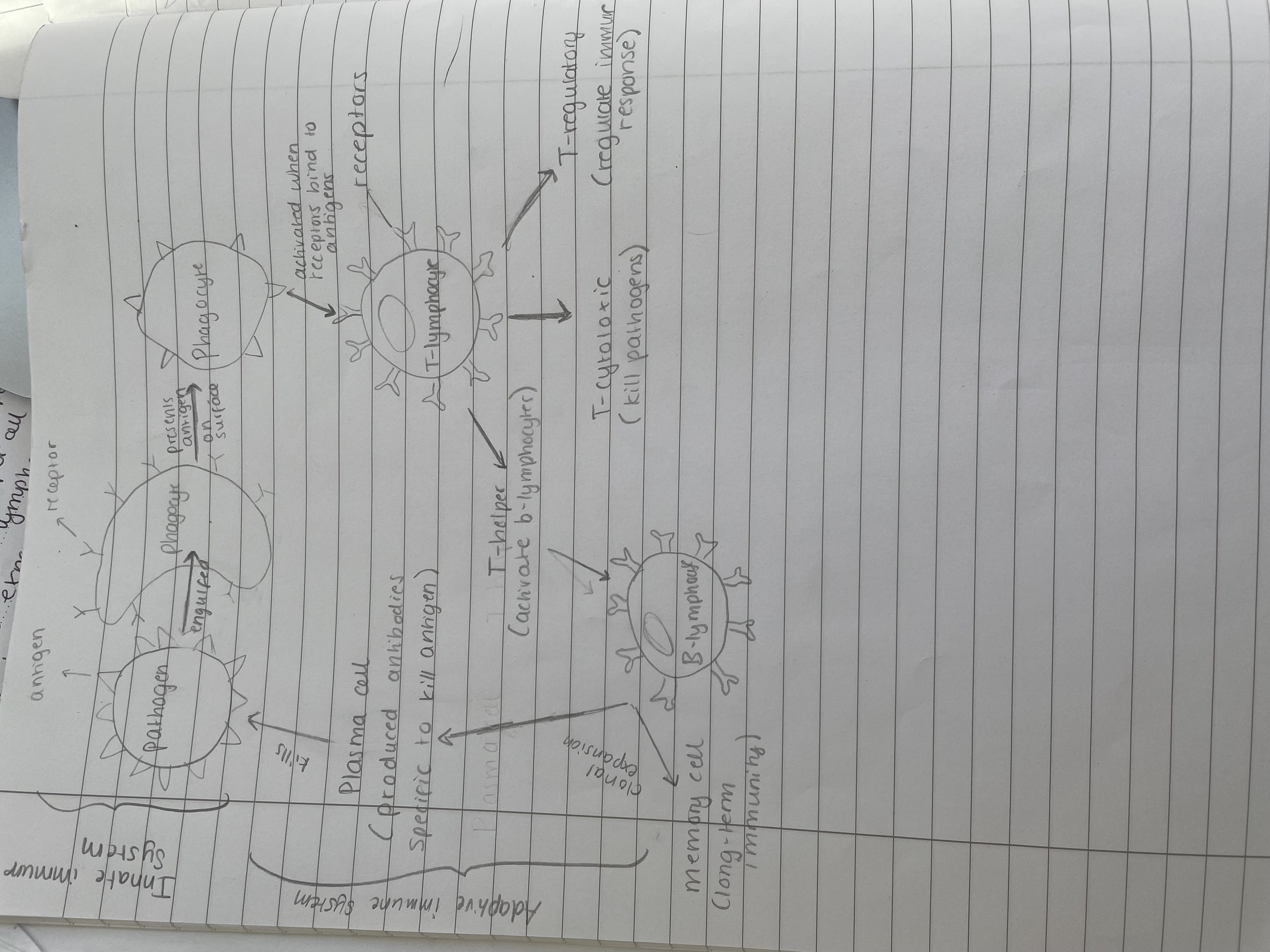
What are antibodies?
Antibodies are produced by the plasma b-cells. They are specific to antigens on pathogens, bind to them, and kill them
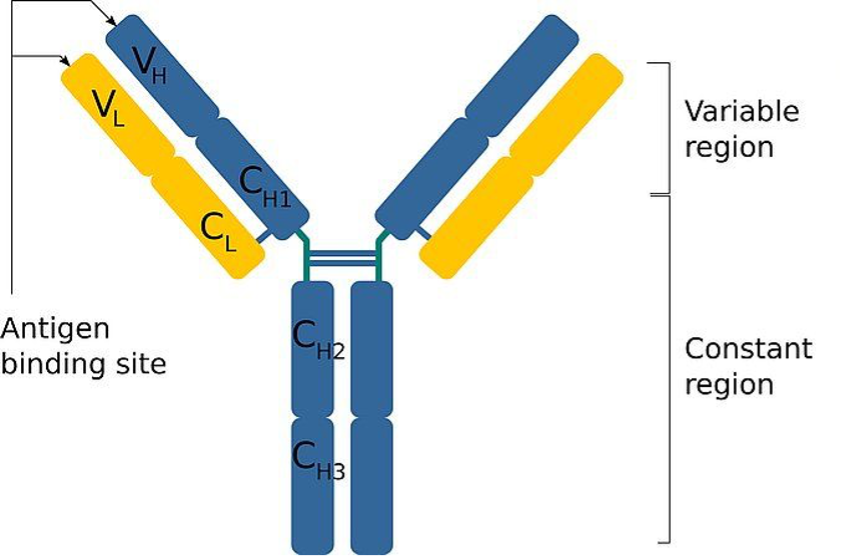
What is clonal selection and expansion?
When a b-cell is activated by the T-helper cell, and then divides by mitosis and differentiates to form plasma and memory cells. This is the same for t-lymphocytes, once activated by the phagocyte
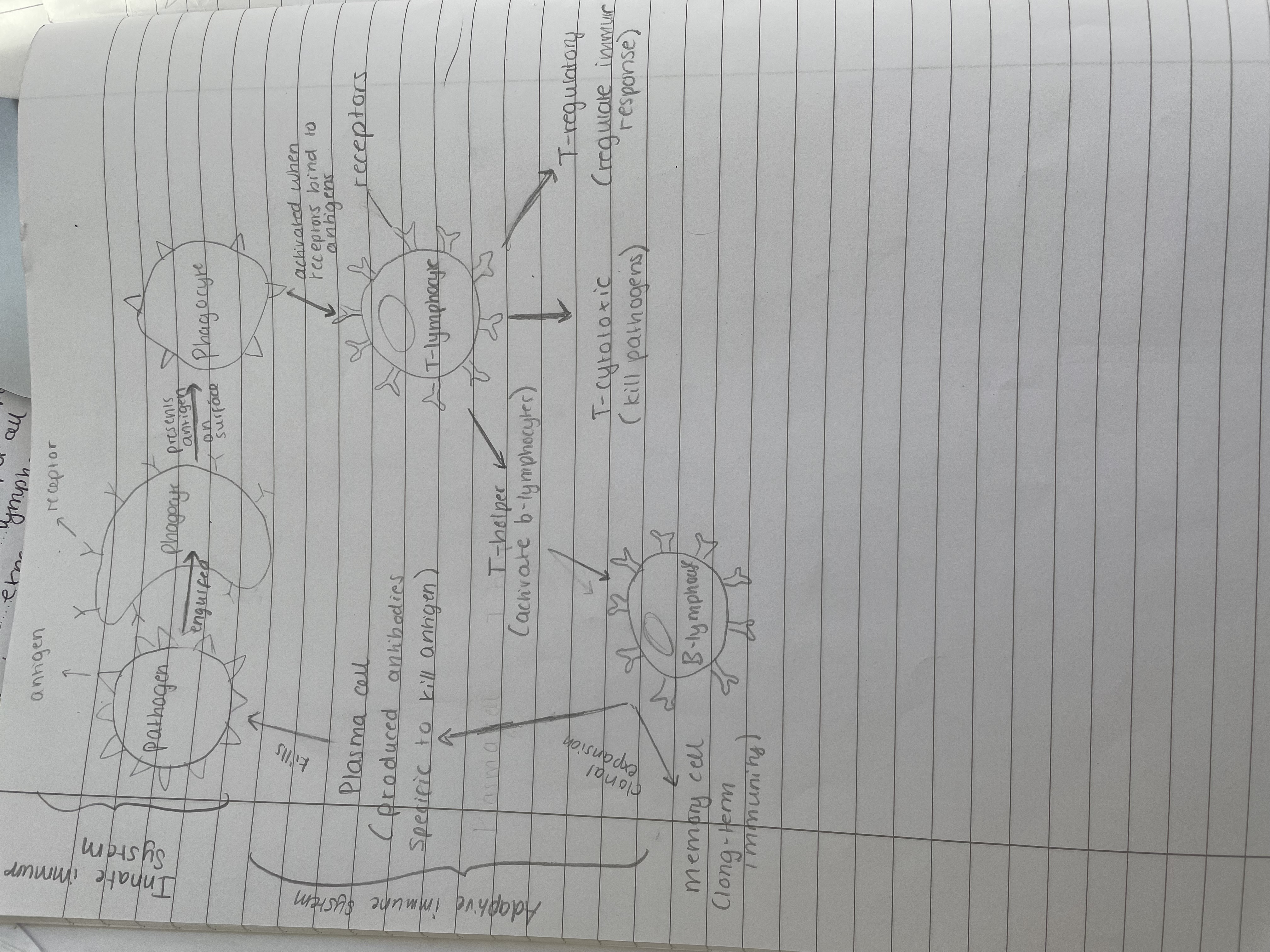
How do the plasma b-cells produce many antibodies?
They have a large endoplasmic reticulum, so they can produce lots of antibodies by protein synthesis
What is immunity?
It is the ability of the body to eliminate infectious diseases.
What improves immunity?
The more memory b-cells you have, the longer the body remembers the antigen, and can recover quicker the next time you have the pathogen. The first time your body is exposed to an antigen, it carries out the primary immune response. The next time it comes across the antigen, it triggers the secondary immune response.
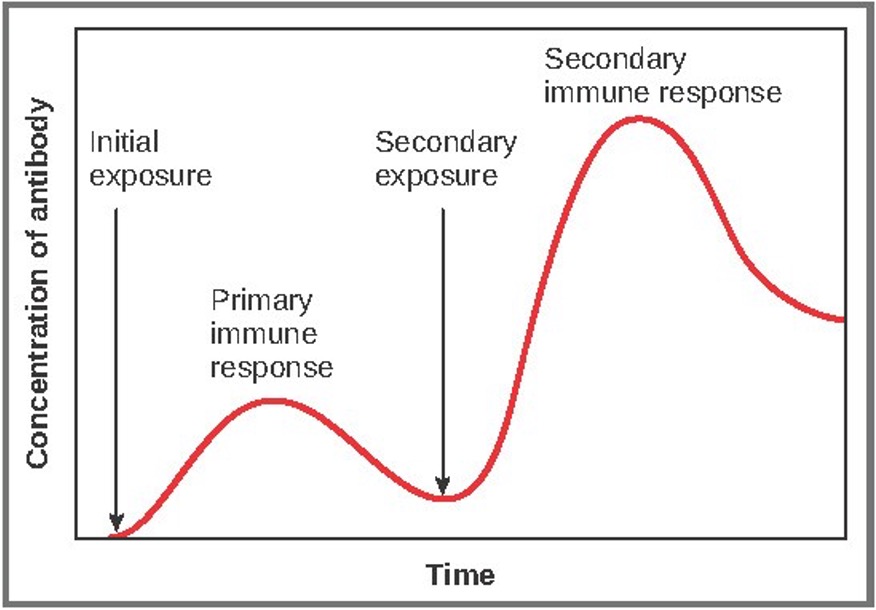
What is immunization?
It is using vaccines to become more immune to pathogens. Vaccines can contain:
a weakened version of a pathogen
Subunits that act as antigens for pathogens, or nucleic acids from which genetic material for pathogens can be made (this will train the body to fight against pathogens, and will produce memory cells)
What is HIV and how is it spread?
HIV is a virus which attacks the T-helper cell, which therefore hinders the production of antibodies. In the beginning, the body can fight off the disease, but as it progresses, the number of antibodies reduces. So diseases can’t be fought off, as the pathogens cannot be destroyed. AIDs occurs in a late stage of HIV, when a person has many diseases at the same time, and the immune system is damaged.
How can HIV be passed on from one person to another?
Through bodily fluids:
-sexual intercourse without a condom
-sharing of needles
-from mother to child - drinking breast milk or placenta
What are antibiotics?
Chemicals that kill harmful microorganisms. Most antibiotics are antibacterial, so they kill or stop the growth of bacteria. They do not kill the good cells in our body.
What is antibiotic resistance?
It starts off with a small part of the population of bacteria being resistant to an antibiotic. These survive, and then grow, to form a large population, all of which are resistant. This is evolution.
To avoid this, we can avoid prescription for non-serious bacterial infections and remain hygiene.
What are zoonotic diseases and give an example?
These are diseases that have been transmitted from animals to humans. An example is covid-19, which is believed to come from a bat, and was transferred onto humans. The negative effect of this is that millions have died, and lockdowns have occurred.
What is herd immunity?
When a large part of the population has been vaccinated, and the spread of a pathogen reduces so much that the other members of the population don’t need to be vaccinated. This is good for people who can’t be vaccinated, such as babies.
Formula for percentage difference
(Difference between two values) / (average of two values) x 100
Formula for percentage change
(change) / (original value) x 100